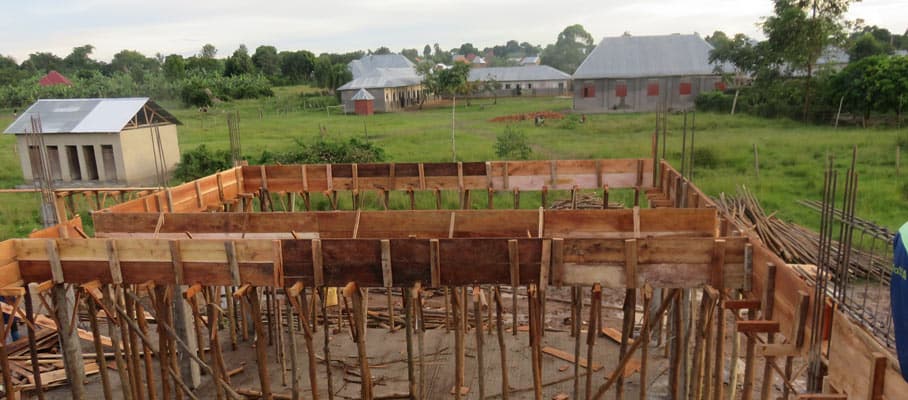To Advance Access to Education, Communities Need to Focus on Financial Equity and Literacy
How to improve access to education in small municipalities? Scott Frank and Ronald Kibirige from the InteRoots Initiative present a community-led example from Kasasa, Uganda.
Access to Education in Uganda
Celebrating World Children’s Day on November 20, we were thinking about education access for the children in Kasasa, a small municipality in Uganda. Children in Uganda have been out of school longer than any other country in the world, and access to remote learning lags far behind middle and high-income countries. A report from UNICEF released earlier this year examined digital connectivity and showed that 2.2 billion children and youth today under the age of 25 do not have fixed internet access at home. That’s two out of every three children in the world. Once children are allowed back to in-person schooling, there will be many more challenges to overcome: social, emotional and financial, to name a few.
An Example from Kasasa, Uganda
It’s no different in Kasasa, where Agnes lives. Kasasa is an agricultural-based community, where both women and men participate in farming activities. For years, Agnes has worked with the women and girls in the community to improve their access to education, creating equity that she feels is not yet there.
“We are a lively community, but there are a lot of challenges we bear as women. Our primary responsibility is our children,” she says.
Agnes wants to improve the lives of young girls in Kasasa. Living as a young girl in Kasasa and elsewhere in Uganda has its challenges. Girls may fear for their safety as they leave their home community and head to other communities to seek education opportunities. In other instances, girls – and boys – lack the money to pay the school fees and are forced to return home.
“Children crave to go to school. Mothers go through thick and thin to make this happen, but these challenges in turn make the children hate school and give up,” she says.
The Tat Sat Community Academy: For the Community, By the Community
When she and others in Kasasa reached out to us at The InteRoots Initiative, we knew we needed to listen. The community had come up with an idea to improve access to education in Kasasa: the Tat Sat Community Academy, a school and cultural institution that would also act as a model for future endeavours in other small communities.
One of the aims is to help families overcome financial barriers.
Improving Access to Education by Overcoming Financial Barriers
When the Tat Sat Community Academy, also known as TaSCA, opens up next year, it will seek ways to alleviate some barriers to education for students and families. Already, there are plans in place to overcome financial barriers and ways to empower Kasasa community members.
The Tat Sat Community Academy seeks to improve access to education through the following initiatives:
- Tat Sat Community Savings and Credit Co-Operative Society (TaSSCOS) is on track to begin operations by the end of 2021. The society is already finalising plans for financing a maize mill as one of its first investments. This will be used by farmers to process produce food locally instead of having to buy food at a high cost. It will also address two significant challenges for students, their families, and the community: financial inequity and the lack of access to financial services/resources. Furthermore, the society will offer a wide array of services for students and community members, including financial literacy programming centered around creating business plans as well as financial planning. Students will also have the opportunity to run the Co-Operative itself through internships and other opportunities. It will also facilitate access to the banking system— often acting as a liaison between members and larger urban banks. By pooling the risk and resources of the community at large – or smaller groups within the community (there currently exists a women’s business guild, for example) – it makes financing viable from the perspective of larger financial institutions.
- Graduate Enterprise Fund (GEF): Every time a student pays tuition, a majority of that money goes directly into a fund for each student held at the Tat Sat Community Savings and Credit Co-Operative Society. Upon graduation, students are eligible to submit a plan for use of the set-aside funds for purposes that will further their personal goals, such as continuing education or starting a business. If the plan is approved by a community board, the student will receive direct financial support (an estimated one to two years of stability) in pursuing their dreams beyond graduation. The community has identified the GEF as a crucial resource for graduating students, who across Uganda can face significant burdens accessing capital, jobs, and continuing education despite completing a secondary education. We have yet to see anything like it in other community models. Establishing the GEF is just one of many ways the community is working to make the TaSCA project truly sustainable.
- Equity in numbers: TaSCA seeks to have the same number of girls as boys in the school once it opens next year.
Through these community-led programme initiatives, we believe students and families can be empowered to improve financial literacy which will in turn lead to greater prosperity and financial security and sustainability. We and the community believe greater financial literacy will lead to greater access to education as children will be able to pursue opportunities that uplift them and the community as a whole.
Agnes, for her part, says she is excited about the prospect of TaSCA and its related initiatives: “One of the things I like about this project is that it is set to grow with the community.”
You can follow along for developments at Interoots.org
